Explainer
What Is Ultra-Processed Food and Why Is It Unhealthy?
Diet•7 min read
Explainer
The latest pandemic COVID-19, is caused by the virus SARS-CoV-2. How does it spread, how did it start, and what do you need to know?
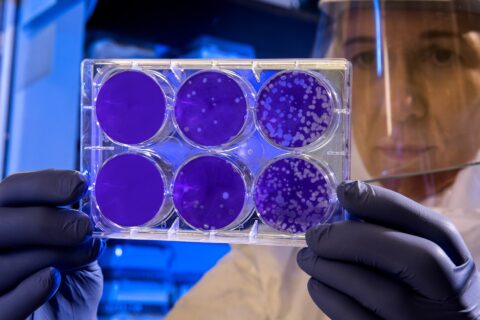

Words by Sentient Media
Last updated: April 27, 2020 at 10:00 AM EST.
Coronavirus (COVID-19) is a viral pandemic, and the virus is already responsible for over 207,446 deaths and over 2,990,559 official cases.
Despite world leaders and health professionals working hard to stop the outbreak, treat the infected, test new suspected cases, and eventually even develop a vaccine, the pandemic continues and will continue to affect a large number of people throughout the world.
COVID-19 is not a lone virus. According to the World Health Organization, “Coronaviruses (CoV) are a large family of viruses that cause illness ranging from the common cold to more severe diseases such as Middle East Respiratory Syndrome (MERS-CoV) and Severe Acute Respiratory Syndrome (SARS-CoV).”
Coronavirus (COVID-19) is a new strain that fits into this family of viruses, with the first case of the disease detected in China in December 2019. The name COVID-19 is an abbreviation of ‘coronavirus disease 2019’.
See our other pandemic coverage:
A Palate for Pestilence: Ominous Links Between COVID-19 and Industrial Animal Farming
by Lisa WardenOther Animals Are Not Humans’ Sacrificial Fall Guys
by Lori MarinoCoronavirus Should Make You Reconsider Eating Meat
by Macken Murphy
And that’s the name of the disease caused by the virus. The virus itself has its own name. It was originally called 2019 Novel Coronavirus (and shortened 2019-noCoV), but it is now called severe acute respiratory syndrome coronavirus 2 (SARS-CoV-2). However, most people and media will continue to talk about the disease COVID-19, not the virus itself.
The viral particle itself is very small: 120 nanometers long, which is roughly the wavelength of ultraviolet light. That means you could line up over 2.5 million viruses in one foot (8.3 in one meter!). You could fit about 160,000 coronaviruses across one penny.
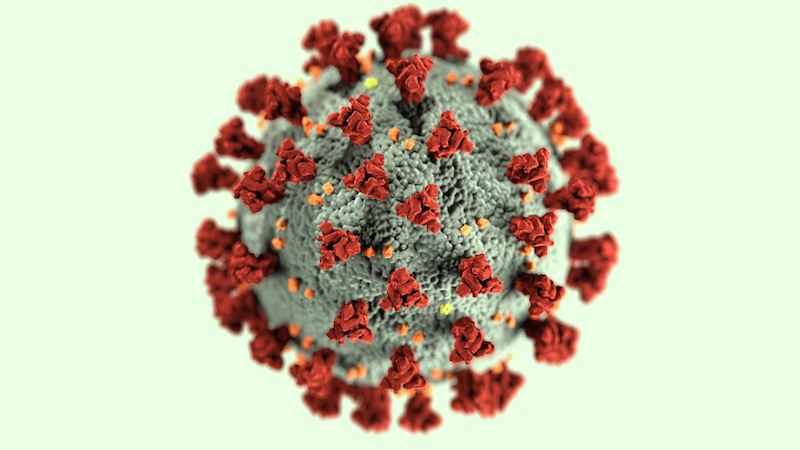
Not everyone will exhibit symptoms from contracting and carrying the coronavirus. The most common signs of COVID-19 infection include:
Headaches, sore throat, aches and pains, and fatigue are also sometimes reported as symptoms. The combination of fever and dry cough is the most common set of symptoms in cases this far. At this point, sneezing has been reported either very rarely or not at all as a symptom. This would mark a clear difference from the seasonal flu or allergies.
Symptoms emerge five to six days after the infection, but they may appear as soon as in one day, or as late as two weeks after a person contracts the virus.
Depending on the severity of the case, COVID-19 can also cause severe acute respiratory syndrome, kidney failure, and pneumonia.
We don’t yet know exactly how the virus spreads, but we have experience with other coronaviruses. COVID-19 spreads between humans mainly through droplets from coughing or sneezing.
There is also potential that the virus is or can be airborne, meaning it would not require droplets to propel its spread. While we’re all being very careful about objects like doorknobs, railings, handles, and other inanimate objects, there actually is no conclusive evidence that the coronavirus would spread via such surfaces.
Because of the uncertainties about viral transmission, extreme caution is the recommended course of action.
Respiratory droplets are a sure vehicle for SARS-CoV-2 to spread. Person-to-person spread can occur in two ways:
Droplet transmission means that the virus is released in “respiratory droplets” that we all breathe out on every breath – or positively shoot out if we cough. About 3,000 droplets can fly out when coughing and they leave at a good 50 miles per hour (about 80 km/h).
Droplets don’t travel much further than 6 feet (about 2 meters) and they do not last long in the air, though they can be carried with winds and drafts until they land on a surface.
If inanimate object transmission is possible, coronavirus could also spread from contact with a contaminated object or surface, such as a steering wheel, countertop, or doorknob. For example, if someone sneezes and then touches a doorknob, other people who touch it can pick up the virus and allow it to enter their body.
If airborne transmission is possible, then viral particles could enter the body simply by floating in the air and being inhaled into the lungs or to mucous membranes.
There is also uncertainty whether transmission can occur from an asymptomatic carrier – a person who has no symptoms of the COVID-19 illness – but who carries the SARS-CoV-2 virus. As the epidemic is monitored and contact tracing is completed, we may know more about the transmission methods.
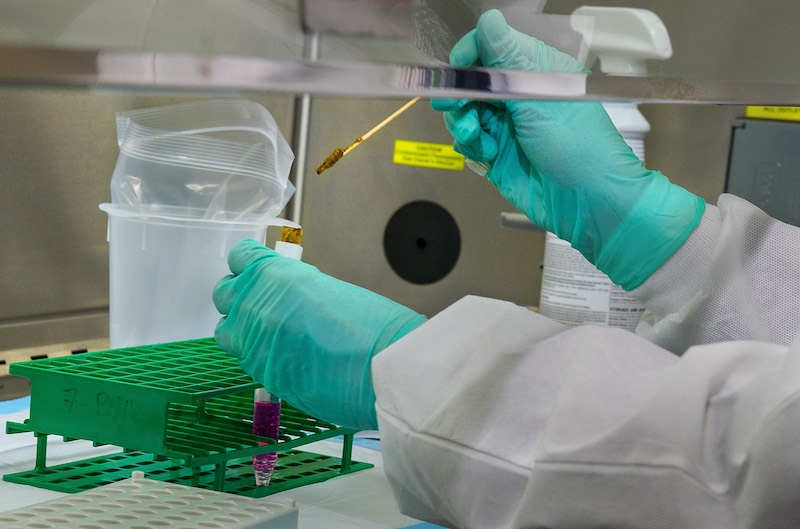
COVID-19, as well as all other coronaviruses, are zoonotic, which means they originate in animals, and if they mutate in a way that allows them to hop from a host of one species into a host of a different species, it can be transmitted between animals and people. For this reason, there has been some confusion that people could become infected from an animal source.
But despite the fact that COVID-19 comes from animals, it’s very unlikely that you’ll become infected from an animal source.
The research into the origin of COVID-19 continues, but it’s believed that it started in pangolin and/or bats sold at a wet market that also sold wildlife in Wuhan, China, or that it crossed over from live wild animals into animal meat sold at the market. Based on local sampling, the trail leads to a specific part of the market where wildlife was also sold, but the specific origin has not been discovered.
The virus SARS-CoV-2 is close to two other coronaviruses that are commonly carried by bats. Interestingly, non-human animal carriers of this or similar viruses may be completely asymptomatic.
It seems very unlikely to get the coronavirus from a pet. The World Health Organization notes that there is one instance of a dog being infected with COVID-19 in Hong Kong, but there is no wider evidence to support that a dog, cat, or another type of pet can transmit the disease.
Yes. You should worry about it. Everyone should be concerned about this novel coronavirus as it has the potential to cause serious illness and even death – but it gets worse than that.
First of all, it’s important to remember that most people who contract COVID-19 only experience mild to moderate symptoms. This is particularly true of children and young adults who are in good health.
Approximately one out of every five people who test positive for COVID-19 and develop symptoms require hospitalization, so it’s important for everyone to do their part in stopping the spread.
And this gets us to the more important point why you have to worry about the virus. Not because you might be in personal danger (though you are), but because you can be a carrier and infect lots of other people.
More than anything, the coronavirus is a public health emergency. The “public” in the term means that we all have to do our part, even if we or our loved ones don’t end up getting sick.
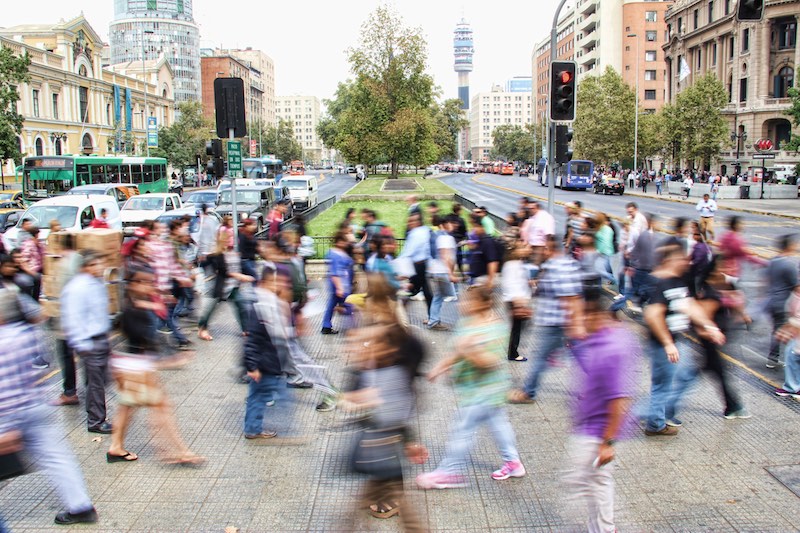
Yes. It is unfortunate that many people are worried about the virus because of their own health, even though in the case of most healthy individuals, the risk of illness, let alone death, is quite small. But without self-isolation, social distancing, and even quarantine in cases of symptoms, the viral pandemic can completely overwhelm our healthcare system quickly.
That is why we need such dramatic public action (public means every one of us, including you and me) to take action to “flatten the curve” – which refers to the visual representation of the coronavirus cases over time.
If we don’t do all these things to slow down the spread of the virus, the cases will spike, and that would mean that all hospital capacity would be taken up by coronavirus patients.
This, in turn, would mean that if you broke your arm and needed to go into a hospital, they couldn’t help you like they normally would. Someone getting the seasonal flu (which is also in season, at the same time as this new pandemic) and developing severe symptoms could also be left without treatment. And that’s not even addressing the millions with chronic pre-existing conditions who require routine check-ups or treatments.
If we don’t do our part in the public health emergency, it will turn into a public health tragedy.
That means no going out into the bar. No traveling to party for spring break (the stupidity). No going skiing, or to the beach, or to the movies. Sorry, but not going is the responsible thing to do.
As of March 23, 2020, the Centers for Disease Control and Prevention notes the following statistics related to COVID-19 in the United States:
While COVID-19 in the U.S. isn’t officially as widespread as some countries, such as Italy and China, the number of confirmed cases is expected to increase as more people are tested. It is possible for the U.S. epidemic to surpass that of Italy during the week of March 23rd, and potentially even that of China.
It should be noted that in the U.S., testing has been relatively rare and that it is unlikely that the country’s official count reflects the actual situation.
Everyone is at risk of contracting COVID-19, but some are at higher risk for severe illness and hospitalization than others.
Medical professionals are conducting research to better understand how COVID-19 affects all people, especially those with pre-existing conditions.
These individuals are at greater risk of developing serious illness:
The data from Hubei, China, for January and February of 2020 shows the following case fatality rate grouped by age, among all symptomatic and asymptomatic infections. (source)
Those numbers include people with and without pre-existing conditions.
A compromised immune system can make any infection worse as the body cannot fight the disease. While it remains prudent to stay very vigilant and take precautions with previous immunology issues, there is currently little official information about how the coronavirus epidemic puts these individuals to risk.
Currently, minimal information is available regarding COVID-19 during pregnancy. Crucially, there has been no information about the spread of the virus to the infant. Newborns have been known to carry the virus but whether the virus was contracted from the mother remains unclear. (source)
The risk of fatal infection is higher in cases with underlying respiratory conditions and higher precautions need to be taken. It is extremely important for people with respiratory conditions to stay isolated and avoid going out into public. If it’s absolutely necessary to go into public, wearing a mask and keeping your distance is a must.
Similarly, hypertension (high blood pressure), cardiovascular disease, and cancer have been indicated as comorbidities – conditions that likely worsen the prognosis of the COVID-19 infection.
Like people with respiratory conditions, those with a history of other chronic illnesses and diseases should avoid going into public or placing themselves in social situations with other people. Exercising extreme caution and self-isolation is the best way to stay safe and healthy.
Stay informed with quality sources. It is important to stay current with the latest updates on the COVID-19 outbreak. You can do so by regularly visiting the World Health Organization and Centers for Disease Control and Prevention websites.
Social media and lower-quality news sources are full of rumors, misinformation, fear-mongering, and wishful thinking. Unless advised by a medical professional or an official body, do not take action (or inaction) that could put your health at risk or risk exposing more people to potential transmission.
There are things you can do in your day-to-day life to protect yourself, such as:
Get into the habit of washing your hands frequently, especially after visiting a public place. Always use soap and warm water for a minimum of 20 seconds. Pay attention to the lower parts of your hands, undersides of your nails, and any creases that might shelter microbes.
Wash hands after:
And you should wash your hands before eating, drinking, or serving anything to other people.
Note: you can also use an alcohol-based hand rub to wash your hands. Any alcohol-based sanitizer needs to be at least 60% alcohol.
If you absolutely have to go out or be in touch with other people, leave a minimum of six feet of distance between yourself and other individuals, especially those who are exhibiting symptoms.
If you’re too close and someone coughs or sneezes, you could breathe in the droplets, thus contracting the virus.
Just as importantly, if you are carrying the virus – even if you don’t have symptoms and are generally healthy – you might pass on the virus to someone who is old or of frail health. In that case, you may be giving that person a fatal disease.
There are two reasons why this is important:
Cover your nose and mouth with your elbow or a tissue if you sneeze or cough. If you have to use your hands, wash them immediately.
The last thing you want to do is infect the air around you with thousands of droplets that others can breathe in.
Even if you’re not leaving your home regularly, disinfect frequently used objects and surfaces daily. Regular household cleaning sprays or wipes will work. Pay close attention to high-touch surfaces that get the most use, such as bathroom sinks and toilets, countertops, doorknobs, and floors.
SARS-CoV-2 can live on some surfaces for up to three days, so disinfecting your home regularly is a must.
Don’t shy away from seeking medical care, as it’s better to be safe than sorry. Even if you’re not bothered by your symptoms, things can change in a hurry. Not to mention the fact that you can spread the virus to other people.
However, if it is not a medical emergency, instead of physically going to a hospital or other medical center, consider calling or getting in touch with your medical professional online. Many countries and medical institutions make this possible and recommend it as the first step.
You should do this no matter how you’re feeling. If you’re ill, going into a large crowd puts everyone else at risk.
And if you’re healthy, the more people you’re around the greater chance there is of contracting the virus. This goes along with practicing social distancing.
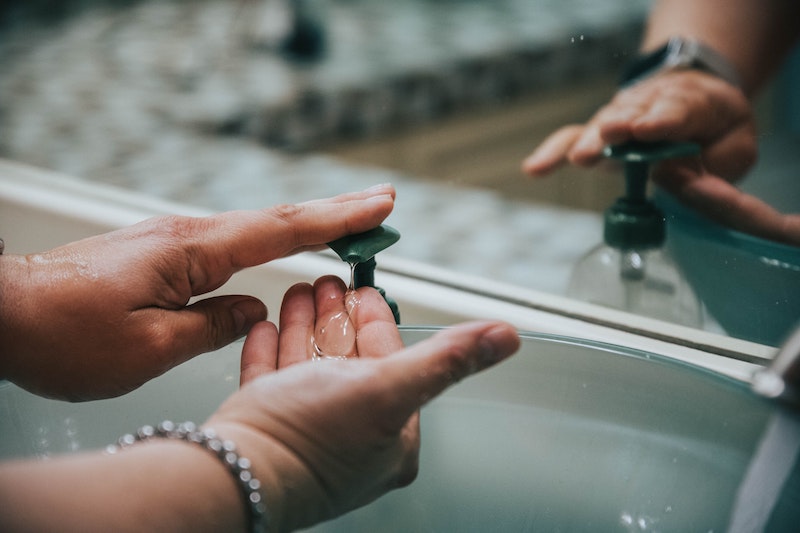
Just because you’re experiencing symptoms of COVID-19 doesn’t necessarily mean you have it. You could be dealing with the flu, common cold, or allergies, among other illnesses. Springtime is allergy-time for many people, and the seasonal flu is in circulation, too.
However, due to the severity of COVID-19, you need to take immediate action if you begin to feel ill.
Here’s what to do if you’re sick:
As mentioned, look into calling or contacting your physician online, if your situation is not urgent. This saves you time and travel, and doesn’t put others at risk. Call ahead before visiting your doctor (they may want to schedule a virtual appointment).
If your situation is clearly urgent, seek immediate medical attention in person.
Because the spreading dynamics of SARS-CoV-2 are not entirely clear, it is possible that isolating yourself from others in your household is beneficial to them. Always consider yourself a potential node that may still infect others.
If you are infected, wearing a mask will greatly reduce the number of respiratory droplets you are spreading around you. It is not a foolproof way to protect yourself or others but it will help keep you and those around you safe.
This should be common courtesy, but the advice bears repeating. If you can cover your droplet-producing coughs or sneezes with a tissue, do so, and then dispose of the tissue. And then – wash your hands.
Keep washing those hands for at least 20 seconds. Err on the side of washing for too long instead of not enough! Wet with water, lather with soap, rub everywhere in hands – fingertips, under the nails, a couple of inches up the wrist – and then rinse well.
This should go without saying in any infectious situation, but if you think you are sick, don’t pass the cup around.
This is good hygiene – any surface that acts as a potential transmission vector should be cleaned thoroughly and often.
Be in touch with your doctor or other medical professional and keep them appraised of how the situation develops. Each potential case is also an important data point that allows the medical community to learn more about SARS-CoV-2 and the resulting COVID-19 illness.
If you’re exhibiting symptoms commonly associated with COVID-19, always first contact your healthcare provider for medical advice.
They can tell you what to do next, both in regard to at-home treatment and testing. Depending on the severity of your symptoms, they may suggest that you schedule an appointment at their office or visit a local emergency room.
It is very possible that your country doesn’t have enough testing capacity. The U.S., for example, does not have the capacity to test enough people to track the spread of the pandemic on a national level, let alone to tell concerned individuals if they have the disease or not.
Currently, there is no vaccine or specific medicine used to prevent or treat COVID-2019. However, there are things you can do to relieve the symptoms associated with the virus.
It’s best to take treatment guidance from your medical team, as they have the knowledge necessary to help you overcome the virus. Some people are able to overcome COVID-19 without much medical intervention, while others end up in the hospital with more advanced needs, such as the use of a ventilator.
Medical professionals are in the process of developing possible treatment options for COVID-19, including a vaccine. But it may be many months or more than a year before a vaccine is developed, tested, and deployed into the hands of the medical community.
There has been some anecdotal evidence about NSAIDs such as ibuprofen and naproxen being correlated with the seriousness of COVID-19. While this link remains to be verified, individuals should not assume they can treat the disease by taking non-steroidal anti-inflammatory drugs that are sold over the counter.
The incubation period is the time between catching the virus and displaying symptoms of the disease.
There is no exact known answer to this question, with estimates ranging anywhere from 1 to 14 days. However, it’s believed that the most common incubation period is five days.
A potentially long incubation period is one of the primary concerns around COVID-19, as someone can have the disease and not know it. This makes them more likely to spread it if the virus is transmissible during the asymptomatic incubation period or even parts of the period.
It’s a common misconception that antibiotics are effective in preventing and/or treating COVID-19.
Antibiotics are designed to treat bacterial infections, not viruses. And since COVID-19 is a viral disease, antibiotics have no effect on it.
Bacteria and viruses are very different kinds of microbes. Bacteria can be 1,000 bigger than viruses, for example. Viruses are so small, and act in such special and narrow ways, that the scientific community is not even sure if viruses should be categorized as living beings or not.
Don’t attempt to use antibiotics on your own to prevent or treat this disease. Only do so at the direction of your doctor if you also need to treat a bacterial infection.
Currently, there are no medicines developed to prevent, treat, or cure COVID-19. As a new virus, it will take time for medical professionals to develop medicine to combat the disease.
On the plus side, there are traditional and home remedies you can use to alleviate some of the symptoms of COVID-19. Rest and drinking lots of fluids are a good start.
Before using any remedy or home therapy, consult with your doctor. You don’t want to do anything that could cause more harm than good.
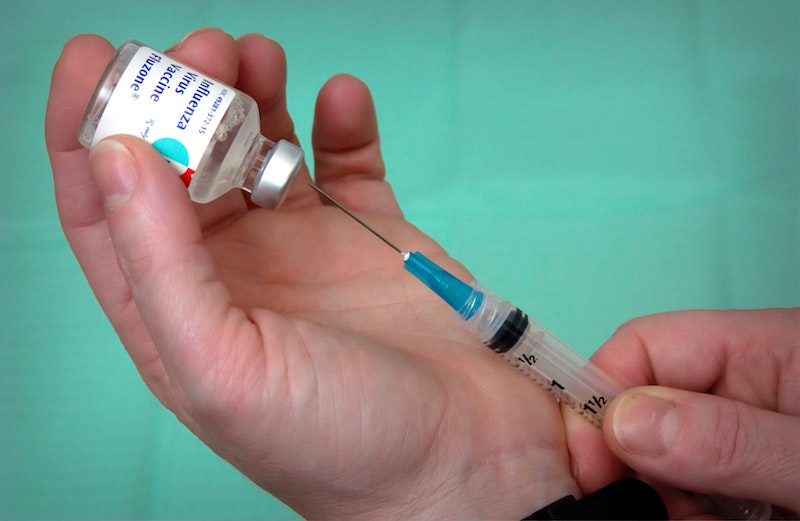
Researchers, scientists, and medical professionals around the globe are working day and night – without exaggeration – to develop a vaccine and treatment standard for COVID-19. However, to date, there is nothing available to cure the disease or stop people from getting it.
There are several established drugs currently being considered for the treatment of COVID-19, such as Hydroxychloroquine and Remsdesivir.
Even though there is no vaccine or medication for the treatment of COVID-19, those affected should receive medical care to relieve symptoms and monitor their health.
There is still some gray area in regards to the origin of COVID-19 and the SARS-CoV-2 that causes it, but it was first identified in Wuhan, China.
A large number of early patients had a link to Hua Nan Seafood Wholesale Market, one of the most highly visited animal and seafood markets in the region.
Health officials believe that SARS-CoV-2 was originally transmitted from animals, potentially bats, to humans, but it is possible that the contamination took other steps in between.
Due to the highly infectious nature of the virus, it quickly spread both in the local area and across the globe, with some countries infected more than others.
SARS-CoV-2 and other viruses that have pandemic potential are often tied to humans’ use of animals for food or entertainment. Animal agriculture forces the non-human animals to live in highly stressful, crowded, and unsanitary conditions – all factors that make new pathogens likelier to develop and spread.
Though it has been reported that the virus started from wildlife, it should be noted that “wildlife farming” for food is common in China, and meat of animals such as pangolins, snakes, bears, tigers, dogs, and cats are considered special delicacies, just like pigs, cows, and chickens.
From the animal’s perspective, it does not matter what species one happens to be. A caged dog raised for slaughter suffers just like a pig caged and raised for the pleasure and palate of human animals.
There’s a lot of misinformation pertaining to COVID-19. Here are some things that are not effective against COVID-19:
There are three things to keep in mind at all times:
In less than three months, COVID-19 has changed the world forever. It’s responsible for tens of thousands of deaths and illnesses to date, with the number of cases rising by the day.
With this information, you should now have a better understanding of COVID-19, including symptoms, how it spreads, and how to protect yourself.